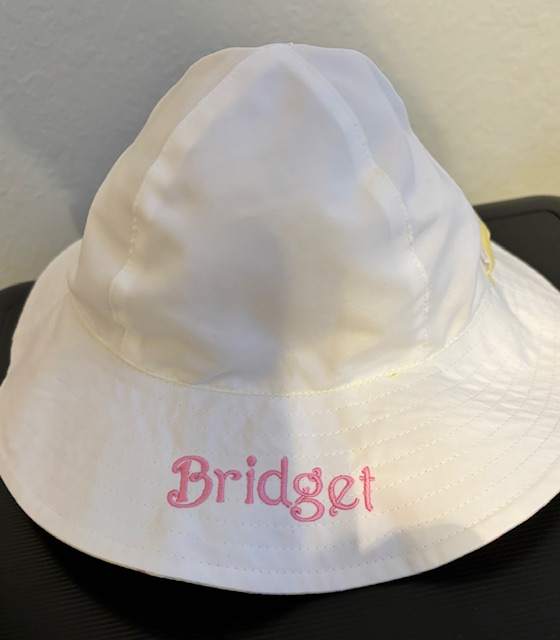The Art of Customized Needlework: Opening the Secrets to Creating Special and Remarkable Layouts
The secrets to creating personalized needlework layouts that mesmerize the eye and leave a long-term impression lie in a fragile equilibrium of method, creativity, and interest to detail. As we dive right into the world of custom-made needlework, we discover the nuanced interaction between string choice, sew complexity, and design customization that raises a simple garment to a work of art.
Choosing the Right Embroidery Threads
When choosing embroidery strings, what crucial elements should you think about to make sure the ideal outcomes for your customized layouts? The option of embroidery string is critical in establishing the final result of your embroidered style.
Furthermore, the weight or thickness of the thread plays a significant role in the appearance of the embroidery. Thicker threads can include measurement and appearance to your layout, while finer strings are optimal for intricate information and tiny message. In addition, taking into consideration the shade fastness and washability of the string is critical to ensure that your custom styles preserve their high quality and vibrancy in time. By very carefully reviewing these variables and choosing top notch strings that fulfill your certain needs, you can improve the visual allure and longevity of your stitched developments.
Exploring Various Stitch Techniques
To delve right into the realm of 'Discovering Various Stitch Methods', one must realize the ins and outs and nuances that each sewing method brings to the art of needlework. Various stitch techniques not only include visual rate of interest but additionally add to the general texture and dimension of the design. One popular stitch method is the satin stitch, which involves carefully stuffed parallel stitches to produce a smooth and glossy surface, suitable for filling in shapes and producing vibrant details.
On the various other hand, the backstitch is a flexible method usually used for laying out and adding fine information. It entails stitching backward to create a strong line of needlework. Furthermore, the French knot stitch adds a tactile aspect to layouts, perfect for producing textured accents like blossom centers or attractive touches.
Exploring different stitch methods allows embroiderers to play with light, shadow, and depth within their styles, boosting the aesthetic allure and imaginative quality of their needlework tasks. By understanding different sewing techniques, one can open countless opportunities for creating special and unforgettable personalized needlework pieces.
Incorporating Personalized Style Aspects
Having actually discovered the intricacies of various stitch strategies such as the satin stitch, backstitch, and French knot, the emphasis currently changes in the direction of integrating individualized layout aspects in customized embroidery projects. Personalized design components play a crucial duty in making needlework tasks absolutely distinct and memorable. One way to include customization is by including initials, names, or significant dates to the layout. This not just helpful resources includes an individualized touch however likewise enhances the nostalgic worth of the embroidery piece.
One more means to include individualized design aspects is by including signs or motifs that hold unique significance to the recipient or reflect their rate of interests and personality. For instance, including a favored blossom, animal, or hobby-related icon can make the embroidery style extra significant and personalized. Additionally, selecting shades that resonate with the recipient or line up with the desired style can additionally boost the personalization of the embroidery job.
Understanding the Art of Shade Coordination

One trick aspect of color control is understanding shade concept. This includes recognizing how different shades interact with each various other, the feelings they communicate, and exactly how they can be combined to develop aesthetically appealing layouts. By applying color concept principles, embroiderers can create harmonious shade combinations that boost the overall look of the layout.
Additionally, taking notice of comparison is vital in shade control. Making use of contrasting colors can help specific components of the design pop, boost readability, and create a visually dynamic needlework item. tailor seamstress By understanding the art of shade coordination, embroiderers can raise their styles and develop memorable pieces that resonate with customers and audiences alike.
Enhancing Structure With Advanced Needlework Stitches

French knots, as an example, are best for including little, raised dots to your style, simulating the appearance of grains or developing a textured surface area. Bullion knots, on the other hand, can be used to produce twisted, ropelike aspects that include a glamorous feeling to the embroidery. Seed sewing entails tiny, scattered stitches that can complete locations with a polychromatic texture, while turkey work develops cosy, dimensional accents reminiscent of animal fur or foliage. Trying out these advanced needlework stitches enables you to press the boundaries of traditional embroidery and create genuinely unique and aesthetically enticing appearances in your layouts.
Final Thought
In final thought, the art of customized embroidery entails a mix of selecting the best threads, discovering various stitch techniques, incorporating personalized style elements, understanding shade sychronisation, and improving texture with innovative stitches. By recognizing and executing these crucial elements, embroiderers can produce special and unforgettable layouts that display their imagination and skill. Needlework enthusiasts can unlock the keys to producing lovely and bespoke items that stand apart and leave a long-term impression.